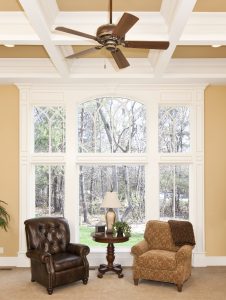
Using interior ceiling beams to decorate a room has both aesthetic and practical advantages, making them a popular design choice in various interior styles.
-
Architectural Interest
- Creates Visual Focus: Ceiling beams draw the eye upward, enhancing the room’s height and adding a sense of grandeur or spaciousness.
- Defines Space: Beams can segment open floor plans by visually separating different areas, such as living and dining spaces.
- Enhances Proportions: In large or tall rooms, beams help balance the scale by filling otherwise empty ceiling space.
-
Adds Warmth and Character
- Rustic Appeal: Wooden beams add warmth and a natural, organic feel to the space, especially in rustic, farmhouse, or cabin-style interiors.
- Historic Charm: Beams evoke traditional architectural styles, such as Tudor, Colonial, or French countryside, lending an old-world charm to the room.
- Modern Twist: In contemporary settings, beams can offer clean, minimalistic lines when made of sleek materials like metal or painted wood.
-
Customizable Style
- Material Versatility:
- Wood: Adds a timeless, cozy aesthetic.
- Metal: Contributes an industrial or modern look.
- Faux Beams: Lightweight materials mimic the appearance of real wood or metal at a lower cost and without structural requirements.
- Finishes and Textures:
- Natural wood finishes for a rustic look.
- Painted beams for a modern or eclectic vibe.
- Distressed or reclaimed beams for vintage or shabby-chic designs.
-
Enhances Lighting and Ambiance
- Integrates Lighting Fixtures: Beams can house recessed lighting, pendant lights, or track lighting, creating functional and aesthetically pleasing illumination.
- Plays with Shadows: The interplay of light and shadow on beams adds depth and texture to the room.
-
Increases Perceived Value
- Luxury Element: Beams can make a space feel more luxurious or custom-designed, appealing to homeowners and potential buyers.
- Timeless Appeal: They bridge traditional and contemporary styles, ensuring longevity in design trends.
-
Conceals Structural or Mechanical Elements
- Practical Use: Beams can hide unsightly elements like wiring, ducts, or structural flaws, offering both functionality and beauty.
- Acoustic Benefits: They can also help improve sound absorption and reduce echoes in large or high-ceilinged spaces.
-
Creates a Theme or Style
- Farmhouse/Cottage: Exposed wooden beams for a rustic or rural aesthetic.
- Industrial: Metal or distressed wood beams to complement exposed brick, ducts, or concrete.
- Mediterranean/Tuscan: Decorative beams stained dark to mimic traditional Mediterranean architecture.
- Modern Minimalist: Clean, linear beams painted to match the ceiling for subtle sophistication.
-
Easy to Incorporate
- Decorative beams do not require structural support in modern designs, making them easy to add during renovations or as part of an interior redesign.
Conclusion
Interior ceiling beams are a versatile and impactful design element. Whether your goal is to add architectural character, create a specific style, or enhance functionality, ceiling beams can transform a plain space into a visually stunning and harmonious environment.
